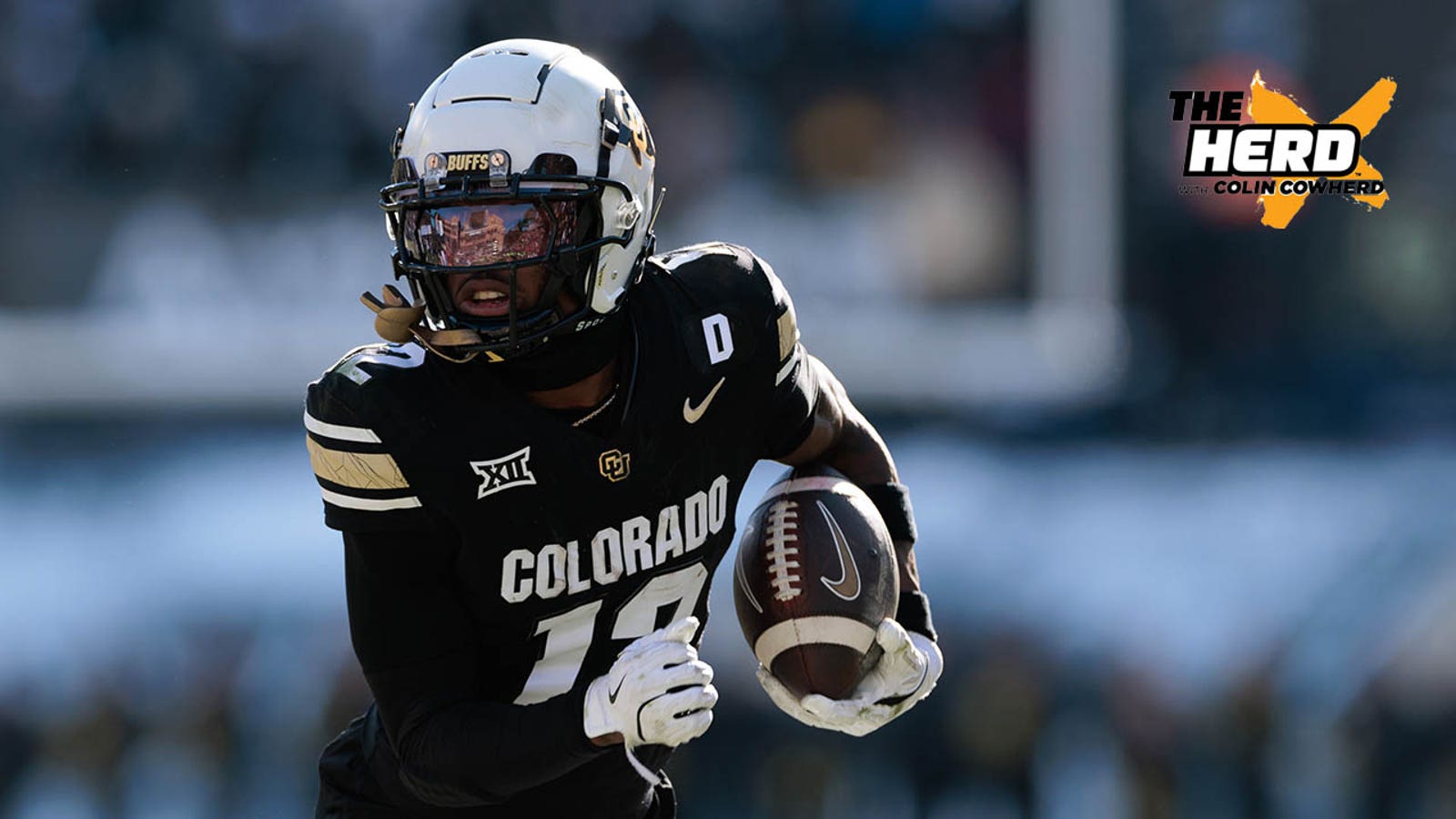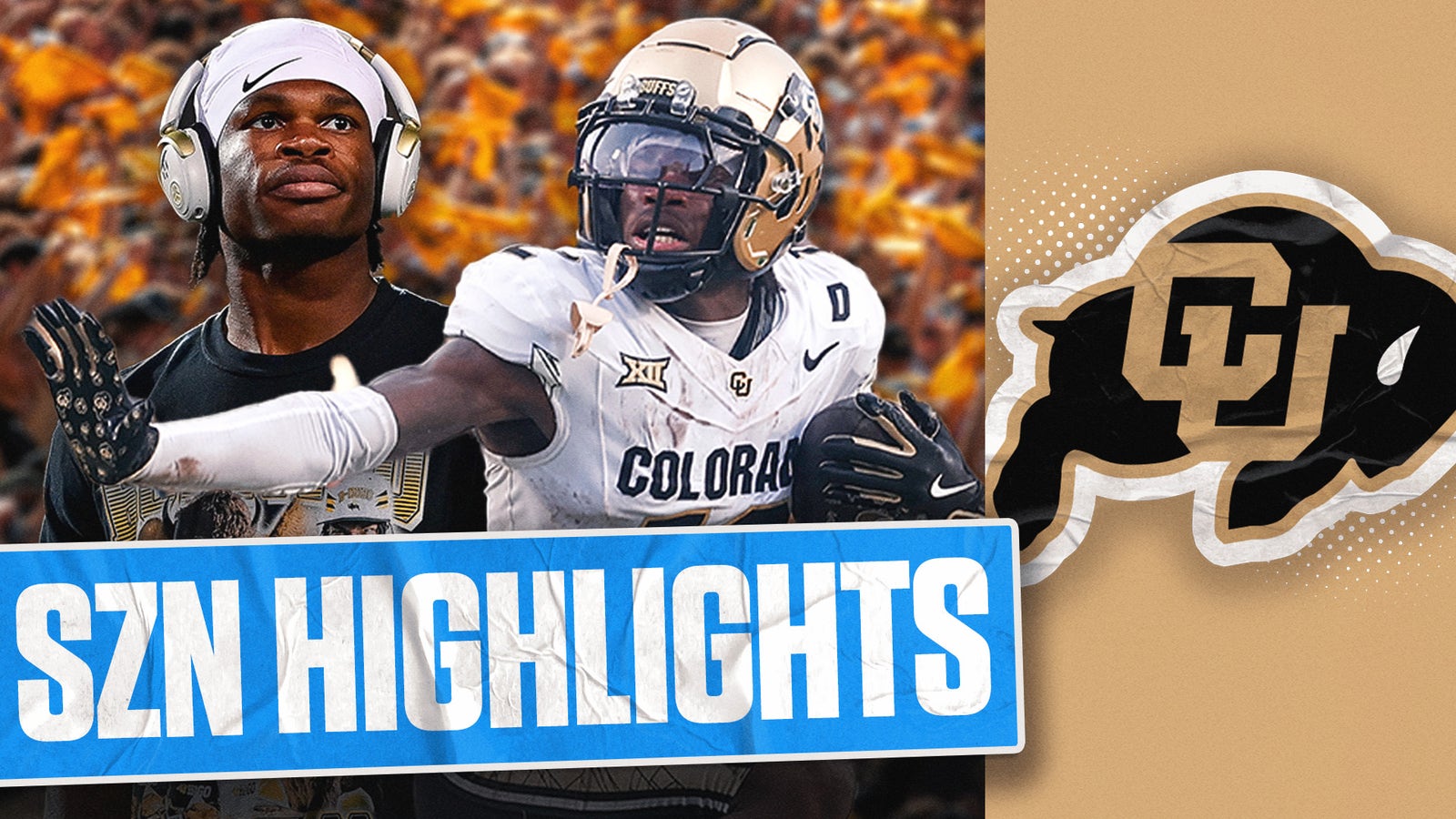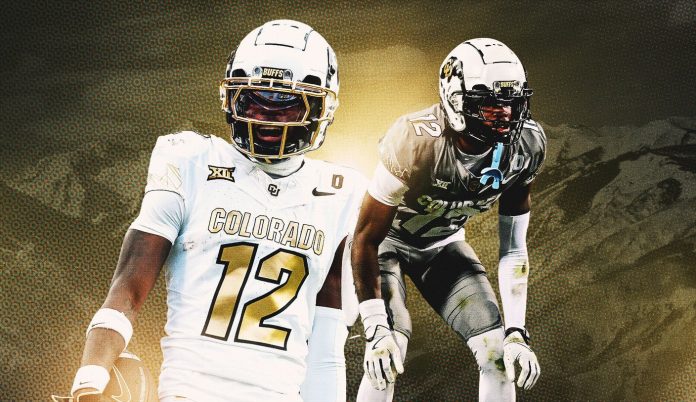Henry McKenna
NFL Reporter
In the literary classic “Harry Potter and the Prisoner of Azkaban,” Hermione Granger wants to take so many school courses that she would have to be in two places at once. Because it’s a magical world, she uses a time-travel device called a “time turner” to do just that, allowing her to pursue a seemingly impossible workload with double-booked class periods.
Let’s get Travis Hunter a time-turner.
That’s what it might take for him to be the two-way player he wants to be in the NFL.
For Colorado in 2024, the Heisman Trophy winner starred at receiver and cornerback. On offense, he finished the season with 96 catches for 1,258 receiving yards and 16 touchdowns from scrimmage. On defense, he logged four interceptions with just one touchdown allowed and an elite PFF coverage grade of 90.3.
Most two-way players give up on playing multiple positions when they enter the NFL, but the Colorado Buffaloes prospect hopes to prove he’s ready to contribute on both sides of the ball at the next level. Every week, he alternates days with his personal receivers coach and his personal defensive backs coach — spending two to three days with each. He also works out just about every day with his conditioning coach.
That’s unusual. But, of course, Hunter is unusual — unlike any draft prospect we’ve seen since Deion Sanders, his college coach, entered the NFL.
“There’s two things that you never hear Travis say: ‘Are we done? And how many?'” said Hunter’s conditioning coach, Greg Scholars, director at AP Ranch in Fort Worth, Texas. “I’ve never had an athlete that I feel could outwork Travis Hunter, because he’s relentless. … I had to remind him that we have to be smart, and we have to take into consideration the longevity of what we’re about to endure.”
First there’s the combine. Then pro day. Then top-30 private workouts. Then the draft. Then rookie minicamp. Then real minicamp. Then OTAs. Then training camp. Then the three-game preseason. Then the 17-game regular season. And maybe even the postseason, with up to four more games.
Woof. Is anyone else out of breath?
Travis Hunter isn’t.
“He’s just unique. That’s the best I can say,” said Clay Mack, Hunter’s defensive backs coach. “I haven’t seen nothing like him.”
Mack has worked with defensive backs Marshon Lattimore, Sauce Gardner, L’Jarius Sneed, Kyle Hamilton and Brian Branch, among others. Hunter is a prospect unlike any of the others.
It’s not easy to find a person — outside of Hunter’s camp — who thinks he can be a full-time, two-way NFL starter. He is around 6-foot and 180 pounds. It’s hard to imagine him withstanding the snap count at both positions in the NFL.
Eric Bieniemy says Travis Hunter has to “pick a side” in the NFL

But playing both ways at a limited capacity? I couldn’t find a soul who doubted him.
In speaking with NFL scouts and current and former players, there’s a consensus on what Hunter’s future holds in the NFL: CB1 with packages designed for him at WR. (There was a small contingent who thought he should focus on starting at receiver with a situational role on defense.)
No one wanted to make the case that he should play just one position.
“Logistically, he’s probably pretty used to two schemes,” said Julian Edelman, who was a receiver, cornerback and punt returner for the New England Patriots during the 2012 season — including in the AFC Championship Game. “If I was him, I’d probably play DB and have a receiver package in the red area, score a couple touchdowns, get a couple PBUs [pass breakups], make a whole lot of money.”
But even that didn’t seem enough for Scholars, who agreed to disagree on where Hunter’s workload would begin and end in the NFL.
“Everything you said makes 100 percent sense to me. But again, I was taking him over to his house, and he’s more excited about anything because this new whiteboard just came in. He’s like, ‘Oh, I’m drawing up schemes and plays,'” Scholars said. “He thrives on information. He’d probably be upset if he didn’t get to go to all the meetings, right? He just really loves the game, and he loves the information.”
Scholars added: “If there is somebody that can do it, I’d bet on Travis.”
Politely, Scholars told me to doubt Hunter at my own risk.
Hunter will tell you the same thing.
“At least give me the option,” he said recently on his podcast. “Don’t just try to shut me down and force me to do one thing. I’ve been doing it my whole life. Ain’t nothing that’s gonna stop me from doing it. So I’m gonna keep doing what I do.”
Check out Travis Hunter’s best moments during his Heisman season

Forget about two ways, let’s talk two sports.
“I can play baseball if I felt like it,” Hunter said.
You can’t knock the kid’s ambition.
OK, but let’s stay focused on football. The Colorado prospect has indicated he wants to do what Sanders did with the Dallas Cowboys in the 1990s, when he served as a two-way player, logging about 50% of offensive snaps and 80% on defense, per ESPN.
“I just want to be better than him,” Hunter said during an appearance on ESPN. “I definitely wanted to be better than him and do things that he has done and be better.”
The dirty little secret is that when a player like Hunter wants to break the status quo and do something unprecedented, it’s all about logistics.
The NFL has no limit on meeting times, but there are only so many hours in a day — and some meetings occur at the same time. (Getting back to: You can’t be in two places at once.) The NFL also has major limitations on practice time.
But with careful planning, a player can do what Hunter is striving to do. Take Scott Matlock as an example. You might not have heard of the Chargers fullback, tight end, defensive lineman and special teams standout. He does a lot of grunt work — not the glorious roles that Hunter will occupy — but he and the team make it work.
At the beginning of each week during the season, Matlock’s coordinators get his schedule. It’s laid out in detail about when and where he’ll need to be, which meetings and walk-throughs he’ll attend, which unit he’ll practice with. All of it.
“It’s definitely long and just a lot mentally to know every intrinsic thing in each game plan. Because I’m a very detail-oriented person. I like to know all the whys. What are we doing and what’s the reason behind it?” Matlock told FOX Sports. “When I learn a new call, I like to know what the linebackers are doing. Where are they sitting? What’s their blitz line? Why are we running this play? … It was just a lot mentally to, maybe comprehend is not the right word, but just absorb.”
On Matlock’s typical workday in 2024, he logged 12 to 14 hours at the facility, starting at 6:30 a.m. when he arrived at the training room. Most days, he’d then kick off meetings with a private offensive session, just for him. Next, he’d go to special teams meetings,




